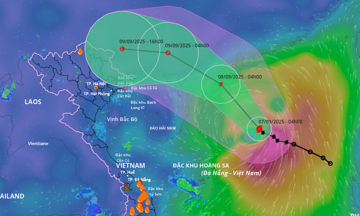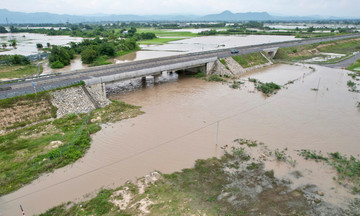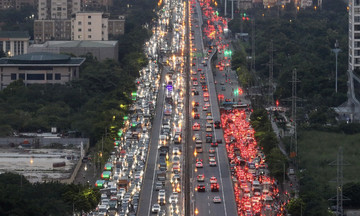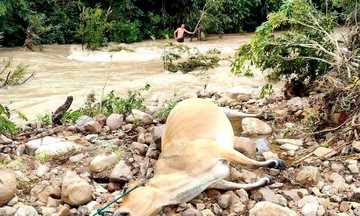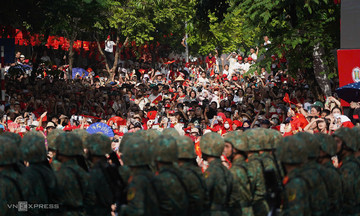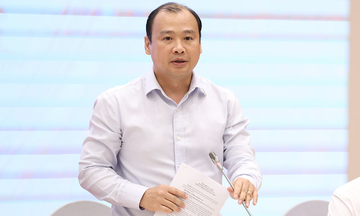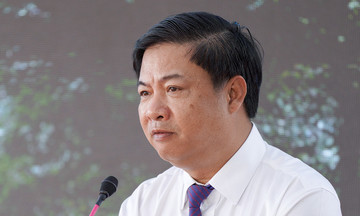Over 16,000 soldiers marched across Ba Dinh square after four months of intense training, culminating in a historic parade commemorating 80 years of national independence.
Lieutenant Hoang Viet Duy, from the 88th Chemical Brigade, took leave to get married while his comrades were training in Ho Chi Minh City for the April 30th parade. The 26-year-old soldier made the most of his break to attend to personal matters before returning to Hanoi to continue training for the national day celebrations. Duy's unit was mobilized earlier than others, starting in mid-April, as the Chemical Corps returned to the parade formation after a 10-year absence.
The newlyweds postponed their honeymoon to fulfill their duty, believing their "personal joy would be more complete" after the grand celebration. Hoang Viet Duy was assigned to the color guard of the Chemical Defense unit, a position demanding he "hold the flag steady, preventing it from tilting or falling under any circumstances".
More than four months before the 80th National Day, plans for a large-scale parade in Hanoi were set in motion, mobilizing all armed forces: Navy, Army, Air Force, Police, Militia, and civilian groups. For the first time, Vietnam also organized a naval parade at the Cam Ranh base (Khanh Hoa), concurrent with the Ba Dinh square parade.
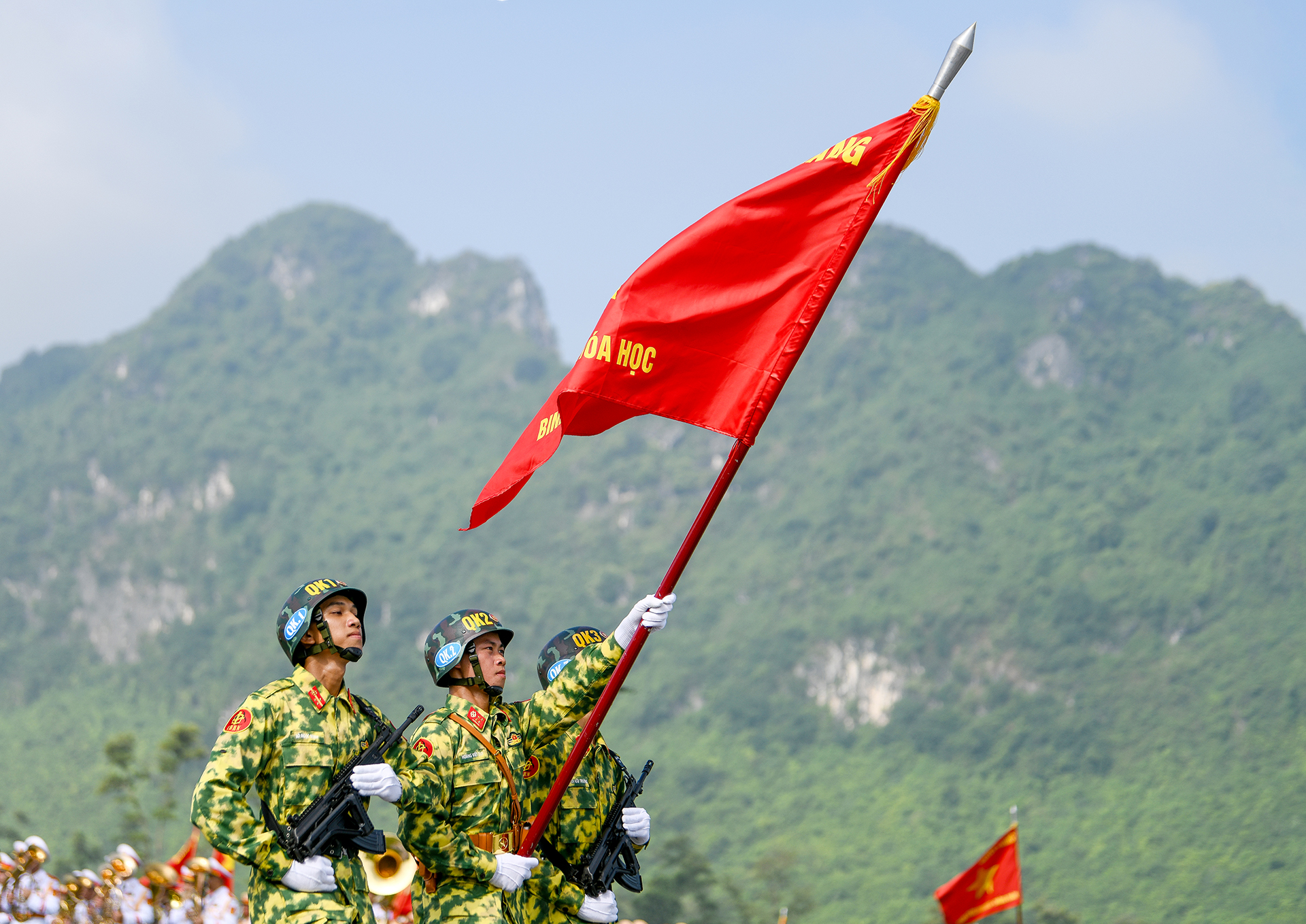 |
Hoang Viet Duy in the Chemical Defense unit's color guard during a rehearsal at Mieu Mon. _Photo: Hoang Phong_ |
In early June, under Hanoi's scorching sun, train after train arrived at the capital's station, bringing thousands of soldiers from central and southern Vietnam for parade training. Seven groups of female soldiers and motorized artillery units gathered at the Mieu Mon Training Center, while male units trained at Hoa Lac, Ba Vi, and Son Tay training grounds. The mobile cavalry practiced in Thai Nguyen.
Simultaneously, the northern sky buzzed with activity. Flights departed from Can Tho, Tuy Hoa, and Phu Cat, with pilots relocating to participate in the Air Force's 15-minute flyover salute. At Hoa Lac, Mi helicopters flew in formation with the national flag, while in Gia Lam, the CASA squadron practiced their formations. Early mornings at Kep Airport (Bac Giang) resonated with the roar of Yak-130, L-39NG, and Su-30MK2 engines as squadrons practiced takeoffs, formations, vertical climbs, dives, and drew white smoke trails across the blue sky.
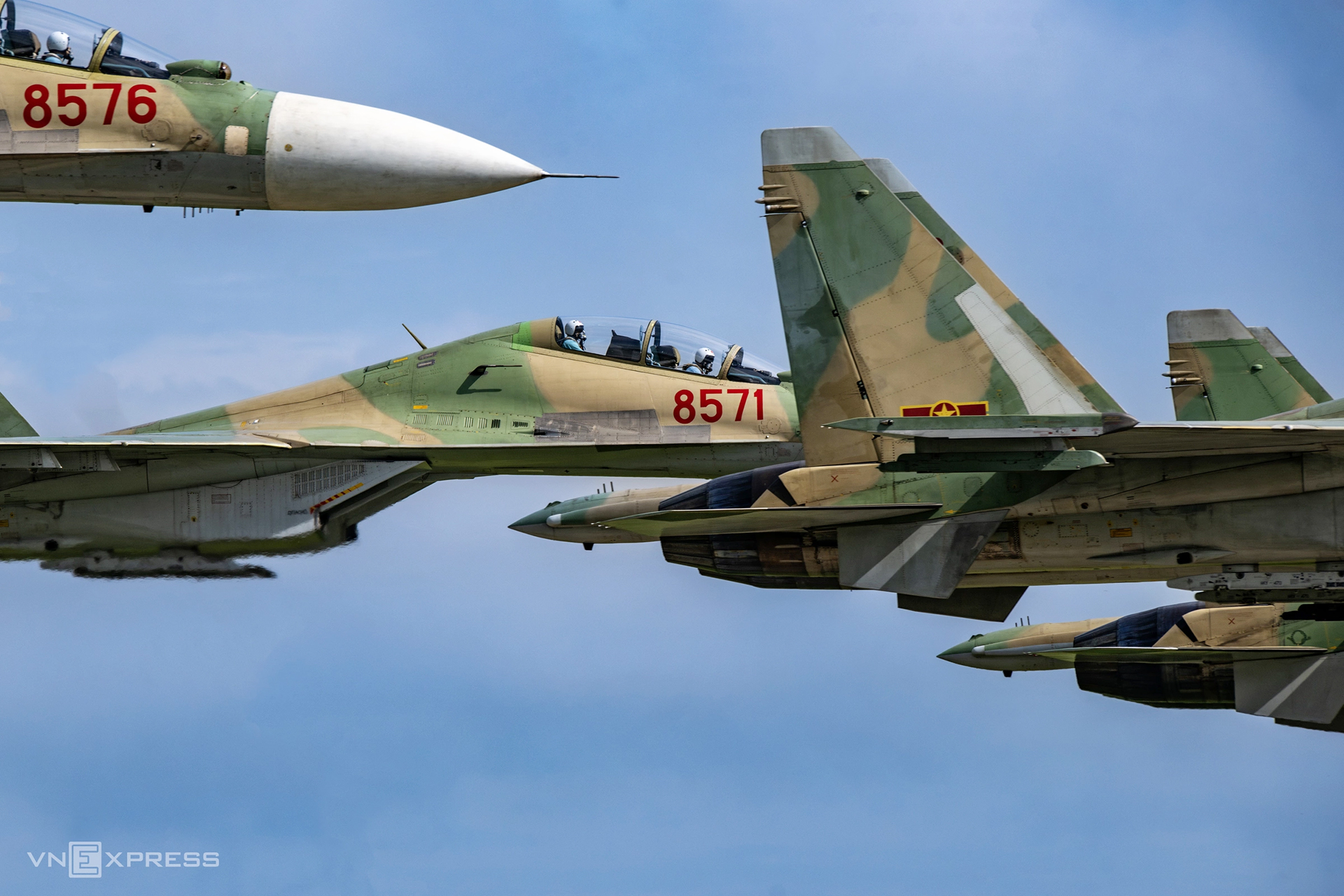 |
Su-30MK2 practicing at Kep Airport, 7/2025. _Photo: Giang Huy_ |
At the Ba Vi training ground, under nearly 40°C heat, instructors' commands rang out: "Not good enough, do it again!". Hoang Viet Duy gripped the three-meter flagpole, weighted with a 2.1 kg iron bar. His arms often trembled while holding his leg raised 40 cm off the ground for two and a half minutes. Unaccustomed to parade drills, Duy's body ached in the initial days. He trained rigorously, doing hundreds of pull-ups and dozens of push-ups daily to build strength.
Training intensified as units transitioned from marching to saluting and ending the salute, the most crucial parade elements. Parade regulations applied equally to men and women, demanding perfect synchronization. Teamwork was paramount for the 164 members to march "as one".
Even for experienced soldiers, the northern summer presented a challenge, particularly for those from the south. On the outskirts, young men and women endured extreme heat, downpours, thunderstorms, and even Typhoon Wipha. "Some days weren't sunny but were so humid that we were exhausted after training," shared Lieutenant Nguyen Phuong Linh from the female Medical Officer unit. The Binh Dinh native wiped sweat from her brow, revealing tanned wrists from over three months of training in Hanoi.
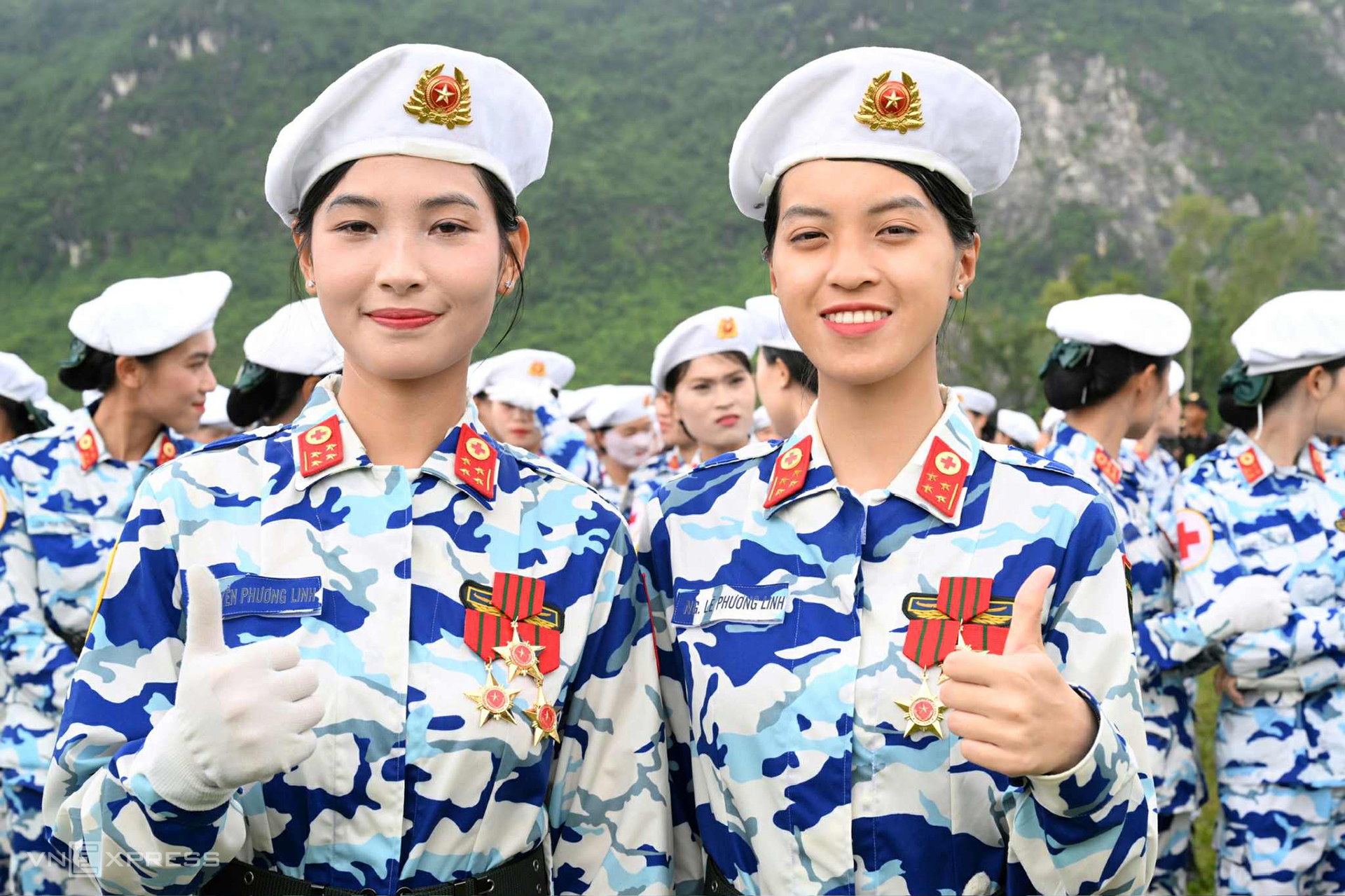 |
Nguyen Phuong Linh and Nguyen Le Phuong Linh, female Medical Officer unit, at Mieu Mon training ground on 16/8. _Photo: Giang Huy_ |
After the A50 parade, Nguyen Phuong Linh had two weeks at home before returning north for training. Accompanying her was her close friend Nguyen Le Phuong Linh, originally from Gia Lai. The two women, the same age and surname, differing only by middle name, enlisted together and marched side-by-side in the female Medical Officer unit from A50 to A80.
These resilient women shared stories of family each night, confessing their homesickness, aching feet, and cravings for their mothers' cooking. Their parents encouraged them: "This is a once-in-a-lifetime opportunity in your military career, not everyone gets this chance".
With each step, Nguyen Phuong Linh remembered April 30th, seeing her parents cheering her on from the roadside as she marched with the female Medical Officer unit. This memory fueled her determination to march across Ba Dinh square.
 |
Truong Son missile complex, domestically produced, during rehearsal at Mieu Mon. _Photo: Tuan Huy_ |
In mid-July and August, over 16,300 personnel from the Army, Police, and hundreds of vehicles underwent four full rehearsals at Mieu Mon. Despite scorching 40°C days and torrential downpours, the formations remained unbroken. In their new camouflage uniforms, the two Phuong Linh and their comrades in the female Medical Officer unit marched past the reviewing stand with precision. Their skin was darker than when they first arrived in the north, but their pace was stronger and more resolute. Lieutenant Hoang Viet Duy held the Chemical Corps flag steady as it fluttered in the sun and rain. These soldiers dedicated themselves to each step, "not just for themselves, but for their families, their units, and the uniforms they wore". All awaited the moment they would march across historic Ba Dinh square.
During a downpour at the fourth rehearsal, the final one before moving to Ba Dinh, Minister of National Defense Phan Van Giang stood on the training ground and instructed: "Even if it rains on National Day, you must march well". He mentioned the 68 army soldiers who paraded on Red Square in Russia, emphasizing that after days of dedicated training, every step of the Vietnamese troops must be more powerful, showcasing the strength and unity of the entire force to the world.
"For the first time, Vietnam is holding a naval parade with the participation of the Navy, Border Guard, and Coast Guard, affirming to the world that our country has sufficient forces to defend the Fatherland," he said.
In preparation for the 80th anniversary of the August Revolution and National Day on 2/9, tens of thousands of officers and soldiers underwent four rehearsals at Ba Dinh square. These rigorous run-throughs brought the entire formation from the training grounds to a state of peak readiness.
On the night of 21/8, over 16,000 personnel and hundreds of vehicles entered the historic square for the first time. Military music filled the air, 21 artillery rounds were fired from My Dinh stadium, and tanks and self-propelled artillery rolled across the square after 40 years. Parade contingents from Russia, Laos, and Cambodia joined the first rehearsal, marching alongside Vietnamese infantry, police, and motorized units. Hanoi's streets were filled with crowds, flags, and cheers, creating an unprecedented scene for a rehearsal.
Three days later, on the evening of 24/8, the square and surrounding streets were even more crowded. People arrived early, spreading mats and lining Hoang Dieu, Dien Bien Phu, and Nguyen Thai Hoc streets, awaiting the troops. Excitement built with each drumbeat as the formations marched in perfect synchronization, their movements increasingly fluid and coordinated.
On the evening of 27/8, a state-level rehearsal replicated the official day's events: flag salutes, torch processions, artillery salutes, and parades. Civilian groups and children joined the throngs, transforming Ba Dinh into a sea of red. Surrounding streets were packed with onlookers, all eyes fixed on the marching troops.
On the morning of 30/8, the final rehearsal mirrored the 2/9 ceremony. Despite heavy rain, tens of thousands of people gathered before dawn, filling sidewalks and streets around Ba Dinh. Cheers erupted as Su-30MK2 squadrons released flares, illuminating the sky. This rehearsal marked the first appearance of the Chinese contingent, marching alongside Russia, Laos, Cambodia, and Vietnamese forces.
From the first rehearsal to the official ceremony, Ba Dinh square became a national focal point for 12 days. Crowds packed the streets, each night larger than the last, turning the capital into a massive stage for a vibrant festival. Veterans with gleaming medals and faded uniforms led younger generations in patriotic songs. Singing, applause, the red and gold of the national flag, and the rhythmic marching created a powerful symphony before the national celebration.
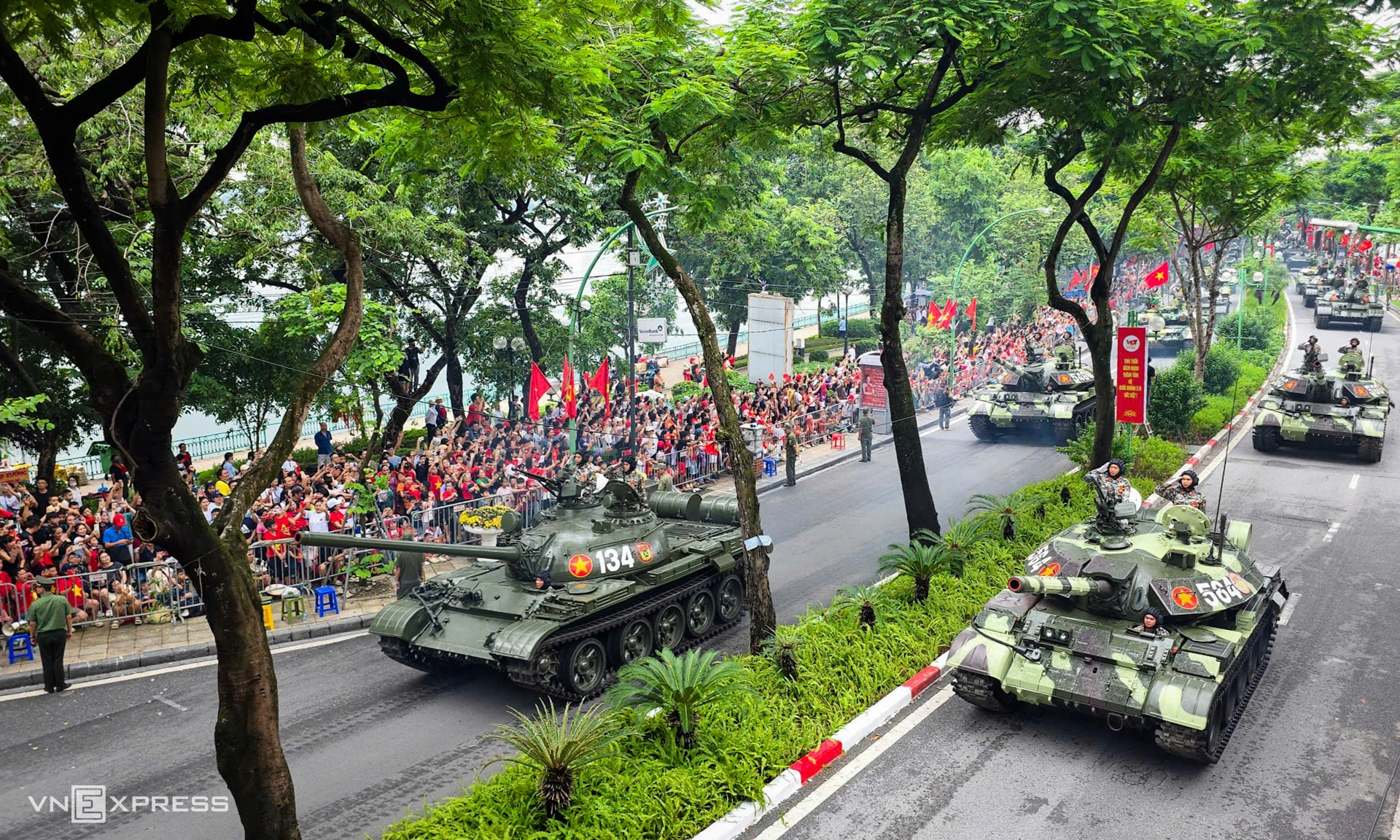 |
10 helicopters fly the Party flag and national flag across Ba Dinh square. _Video: Huy Manh_ |
The historic parade celebrating the 80th National Day unfolded under pleasant autumn weather. Crowds filled the streets around Ba Dinh square and along the parade route the night before, eagerly anticipating the display by the Navy, Army, Air Force, and motorized units.
In his opening address, General Secretary To Lam recalled the moment 80 years prior at historic Ba Dinh square when President Ho Chi Minh read the Declaration of Independence, giving birth to the Democratic Republic of Vietnam, Southeast Asia's first democratic republic. This event ushered in an era of independence and freedom for the nation. The Party leader expressed the nation's eternal gratitude to those who sacrificed for the country's independence, freedom, unity, and the people's happiness. He emphasized the goal of building a strong, prosperous, and happy Vietnam by 2045, a "national aspiration and a pledge of honor before history".
The "Determined to Fight, Determined to Win" banner flew over Ba Dinh, its medals and decorations symbolizing the sacrifices and victories of generations. The flag represented the army born from the people, an army that "completes every task, overcomes every difficulty, and defeats every enemy".
43 parade contingents from the Army, Police, and Militia passed the reviewing stand, followed by military vehicles and specialized police equipment. Military personnel from Russia, China, Laos, and Cambodia also participated. As units entered the parade route, the stands displayed the slogan "Loyal to the Party, Devoted to the People". As vehicles passed, the formations spelled out "Peace - Friendship - Cooperation - Development".
 |
Honor Guard of the three armed forces representing the Navy, Army, and Air Force parade past the reviewing stand. _Photo: Thanh Tung_ |
40 years after the 2/9/1985 National Day, tanks, armored vehicles, transport aircraft, and fighter jets returned to Ba Dinh square. Leading the motorized units were Soviet-made T-54/55 main battle tanks, veterans of the national defense. The Vietnamese-modernized T-54B tanks stood out, demonstrating the nation's defense industry capabilities and the ongoing effort to enhance combat readiness for modern warfare.
For the first time, the Vietnamese People's Army's most powerful ground equipment, including T-90S/SK and T-62 main battle tanks, Scud-B ballistic missiles, and Bastion-P coastal defense missile systems, paraded across Ba Dinh square.
Vietnam also debuted domestically researched and manufactured equipment, including the XCB-01 infantry fighting vehicle, XTC-02 armored personnel carrier, Truong Son anti-ship and land-attack missile system, air surveillance radar, and reconnaissance and suicide UAVs. These showcased the progress and self-reliance of Vietnam's defense industry.
The aerial display over Ba Dinh captivated the nation. From a formation of 10 Mi-8/17/171 helicopters carrying the Party and national flags, to the echelon formation of L-39NG training aircraft, C-295M and C-212i transport aircraft, Yak-130 trainers, and formations of two and five Su-30MK2 heavy fighters, Vietnamese Air Force pilots demonstrated their skill and mastery through complex maneuvers, including high pulls, rolls, triple vertical climbs, and flare releases over Hanoi.
Simultaneously, Vietnam's first-ever naval parade took place in Cam Ranh Bay. An array of warships, patrol boats, and modern aircraft displayed their power. Leading the naval parade were Gepard 3.9-class frigates and Kilo-class submarines flying the Vietnamese Navy flag. They were followed by Petya-class anti-submarine warfare ships and Molniya-class missile boats, accompanied by DHC-6 maritime patrol aircraft and Ka-28 anti-submarine helicopters.
Vietnamese-built vessels also participated, including the domestically produced Molniya missile boat, the Coast Guard and Fisheries Resources Surveillance's DN-2000 offshore patrol vessel, and the 927 Yet Kieu submarine rescue vessel, highlighting the advancements of Vietnam's military shipbuilding industry.
The 2/9 parade not only showcased military might but also embodied the unity of the army and the people. Crowds cheered enthusiastically as the troops marched through the streets. The civilian contingents were hailed as the "patriotic bloc," the largest group in the national celebration. The people are the foundation of the Army and Police, forces that "come from the people, fight for the people, and serve the people".
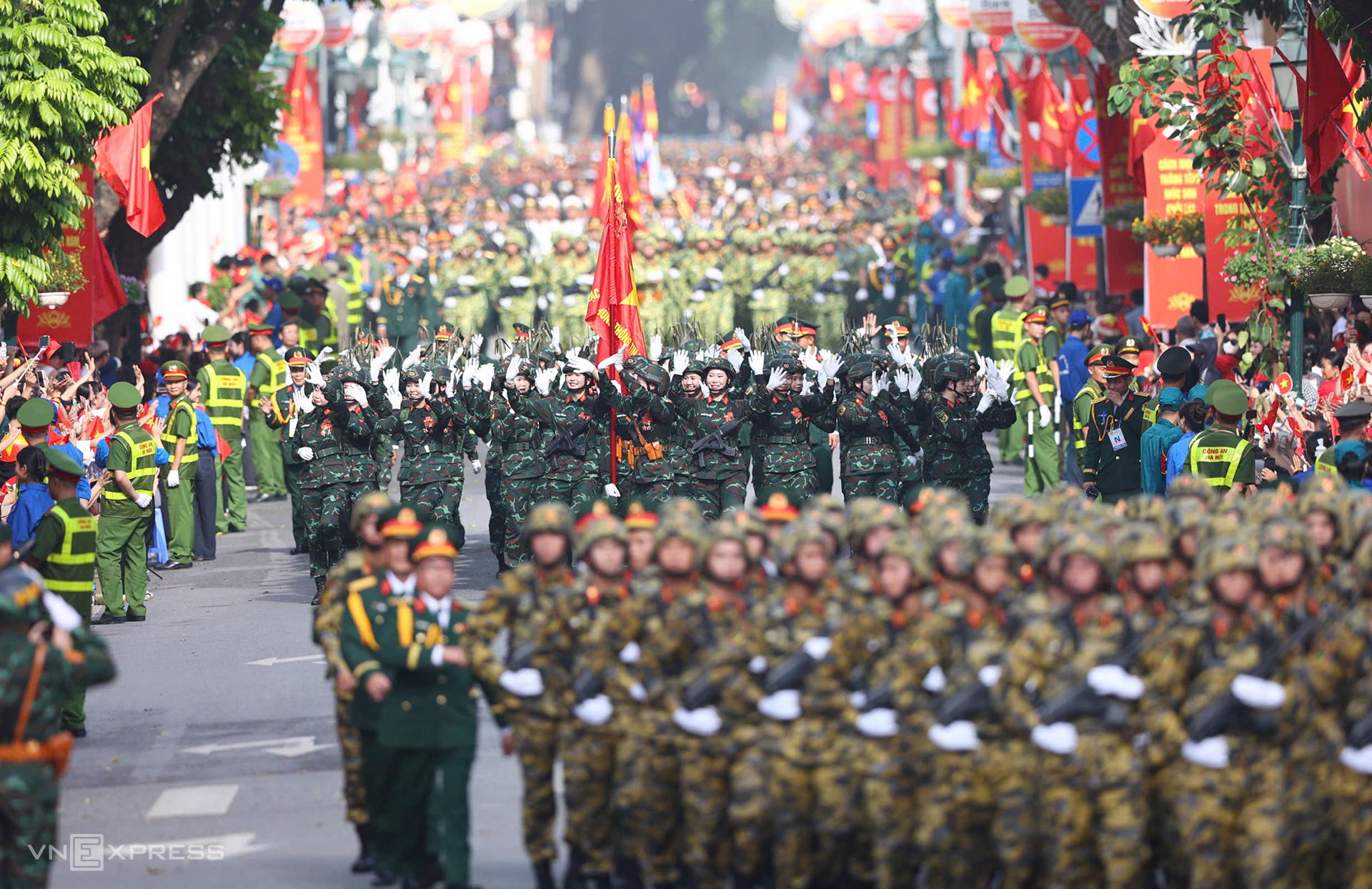 |
Naval parade at Cam Ranh Base, Khanh Hoa. _Video: Navy_ |
After the main ceremony, the parade formations continued through Hanoi's central streets. Young soldiers, rifles slung across their chests, marched while making heart shapes with their hands, responding to the public's affection. From specialized vehicles, "finger hearts" were sent towards the crowds. At the route's end, many soldiers embraced family and friends before returning to their units. Hastily written signs on cardboard reading "Goodbye Hanoi" and "Wishing you good health" were left behind. Their mission was complete.
"Under waving flags and with national pride, soldiers paraded on 2/9 to commemorate Vietnam's 80th National Day", AFP reported. Interviewing citizens, the French news agency received responses like, "We are grateful to previous generations for bringing us peace and freedom", and "We want to show everyone that the Vietnamese people love peace and we are enjoying what we have".
Hong Chieu - Vu Anh



